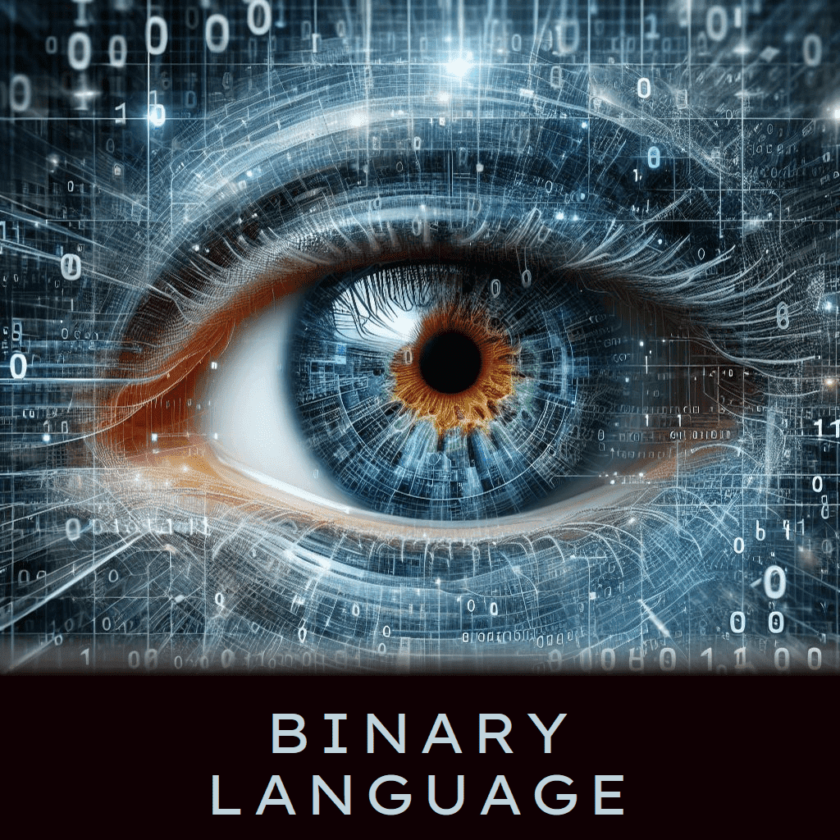Binary language, the very fabric of our digital world, is often misunderstood and overlooked. Yet, it’s this fundamental system of ‘1s’ and ‘0s’ that enables all computing technology. In this blog post, we’ll demystify binary language, delve into its history, and explore how it works, with illustrative examples to make it more relatable.
What is Binary?
Binary, a base-2 number system, was first introduced by Gottfried Leibniz and consists solely of two digits: 0 and 1. It forms the core of all computer languages, representing everything from simple text to complex processor instructions.
In computing, a binary number is typically made up of eight bits, known as a byte. Each bit represents a ‘state’ – either on (1) or off (0). This straightforward system allows computers to manipulate and store all types of data.
How Does Binary Code Work?
Binary code works by transforming data into a series of 1s and 0s that computers can interpret. This conversion process involves taking the input data, whether it’s a letter, number, or symbol, and translating it into binary code.
For instance, the ASCII (American Standard Code for Information Interchange) value for the letter ‘A’ is 65. In binary, this translates to 01000001. This binary code is then processed by the computer to produce the desired output.
Let’s take a look at a simple example. If you wanted to represent the number 9 in binary, it would be 1001. Here’s how:
12^3 + 02^2 + 02^1 + 12^0 = 8 + 0 + 0 + 1 = 9
The History and Uses of Binary Code
The use of binary in digital computers traces back to the work of mathematician and philosopher Gottfried Leibniz, who developed the binary number system in the 17th century.
Today, binary code is the universal language of computers. From your laptop’s operating system to the apps on your smartphone, binary code is integral.
Binary code also finds use in other areas. In telecommunications, it is used for encoding and decoding strategies. It’s also employed in genetic algorithms, cryptography, graphics, and more.
Translating Binary Code
One intriguing aspect of binary code is its ability to be translated. Binary ASCII code, for instance, can be converted back to text. This enables a range of applications, from simple text messages to complex computer programs.
Using a binary to text conversion table, you can translate binary code into plain English text. This is particularly useful in fields like cryptography, where coded messages need to be decrypted.
For example, the binary code 01001000 01100101 01101100 01101100 01101111 translates to “Hello” in ASCII.
Conclusion
While binary language might seem complex, it is a simple and elegant system that underpins our digital world. Its universal applicability and versatility make it an exciting subject to explore. Whether you’re an aspiring programmer, a seasoned tech professional, or just a curious enthusiast, understanding binary language will enrich your appreciation of the technological marvels we often take for granted.
So, the next time you use your smartphone or laptop, remember the humble binary code that makes it all possible. You might even find yourself inspired to learn more about this fascinating language of zeros and ones.
Reference
- Convert Binary. (n.d.). The Best Binary Translator to Convert Binary Code to Text. https://www.convertbinary.com/to-text/
- TechTarget. (n.d.). What is binary and how is it used in computing? https://www.techtarget.com/whatis/definition/binary
- Study. (n.d.). Binary Language of Computers | Definition, History & Uses. https://study.com/learn/lesson/binary-language-explained.html
- Computer Hope. (n.d.). What is Binary? https://www.computerhope.com/jargon/b/binary.htm
- Britannica. (n.d.). Binary code | Definition, Numbers, & Facts. https://www.britannica.com/technology/binary-code
- Lifewire. (n.d.). What Is Binary Code and How Does It Work? https://www.lifewire.com/what-is-binary-and-how-does-it-work-4692749

